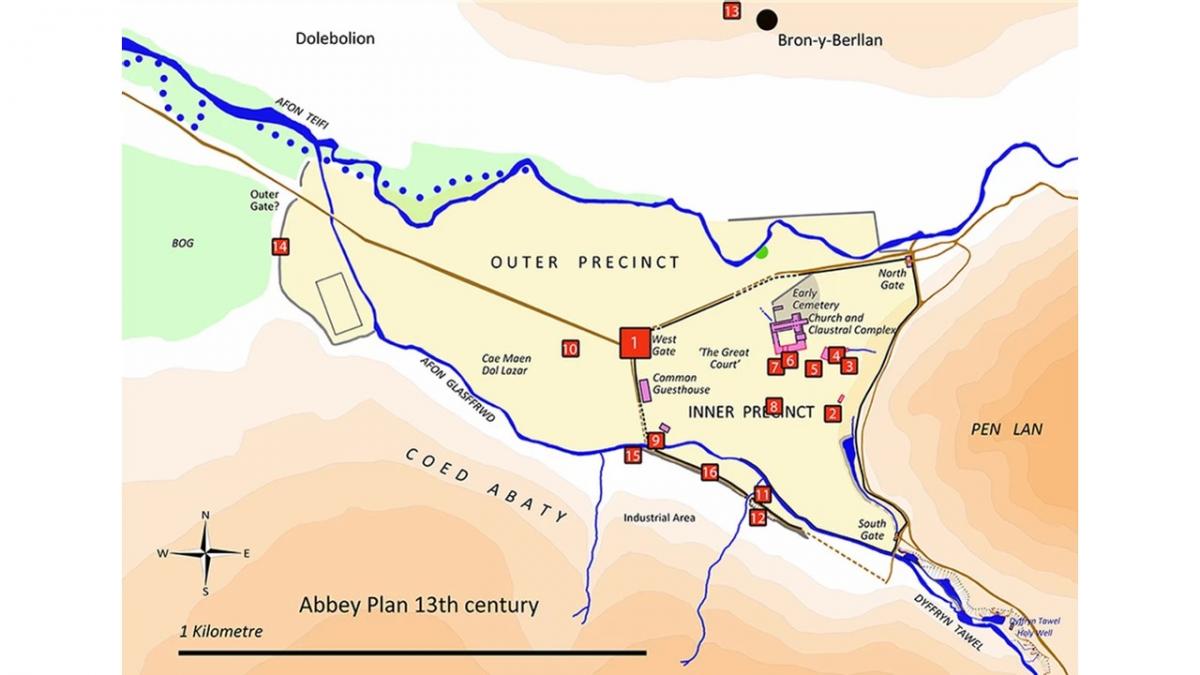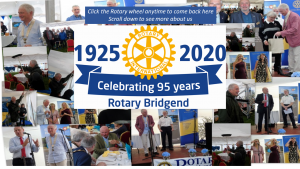Guest Speakers Prof D. Austin (Academic Director ) and Andrew Green (Chair)
Mon, Feb 22nd 2021 at 6:00 pm - 7:00 pm
Ystrad Flur and the Strata Florida Trust

Many of us who visited Strata Florida Abbey at Ystrad Fflur ten years or more ago would have left with the image of ruins of a small number of buildings, part of a small abbey. What the then Guide Books described as being one endowed in the 12th Century by the Lord Rhys in an isolated part of Wales. How understated and inaccurate was this image as shown in a talk by Andrew Green and Professor David Austin.
Andrew, Chairman of the Strata Florida Trust set up 10 years ago, explained how the Trust had purchased the property (an old farmhouse and outbuildings near the Abbey ruins) with a view to seeing if they were related in some way to the Abbey and had part funded on site and off site investigations led by Professor Austin.
Professor Austin (Professor of Archaeology at St. David\'s University, Lampeter) astonished us with what he had discovered. He had discovered that the site was one of Christian importance well before the abbey was built, he had uncovered holy wells constructed many centuries earlier. Yes, the abbey was endowed by Lord Rhys and his son but they provided not just the site, rather a huge area of land, thousands of acres running from the west Ceridigion coast at Aberath inland in the east to the Elan Valley and occupying the whole of the area as a strategic buffer between the areas of Llanddewi to the south and Padarn to the north. Far from being isolated the site lay directly on the Celtic Trail between the coast and inland mid-Wales. The Celtic M4.
Lord Rhys supported the Cistercian Order to establish an Abbey. Built partly of local stone the more important stone work was of stone quarried east of Bristol, brought by ship down the Avon around the Bristol Channel and to Cardigan Bay to Aberath then hauled along the Celtic Trail to Ystrad Fflur. The Abbey complex itself, of which the former farmhouse and farm outbuilding formed a small part, extended to over 100 acres and for two centuries wa the premier Welsh religious centre, a burial ground for Welsh princes
The whole Abbey, as all Cistercian abbeys, was self sufficient, Granges (many of which still survive as farms) provided produce for the Abbey (many of the Granges named for the produce they supplied, with some farms to-day of the same names). At Abergwesyn sheepstations ran a flock of 8,000 ewes with much of the wool being exported via Aberath. Salmon traps alongside the Ceredigion coast provided fish and the fertile coastal belt provided grain. Fuel was provided by peat extracted from what is now known as the "Tregaron Bog". At its height there were hundreds who lived at the abbey, some monks, and some lay brothers, working for the monks.
As with many Cistercian Abbeys decline took place in the late 14th through the 15th Century, well before the final dissolution in 1540.
Andrew rounded off the evening talk with an explanation of what the Trust hopes to achieve during the next few years.
The vote of thanks and this meeting report was given by Rtn Hopkin Joseph.
 Contact William R Williams about this page:
Contact William R Williams about this page:



